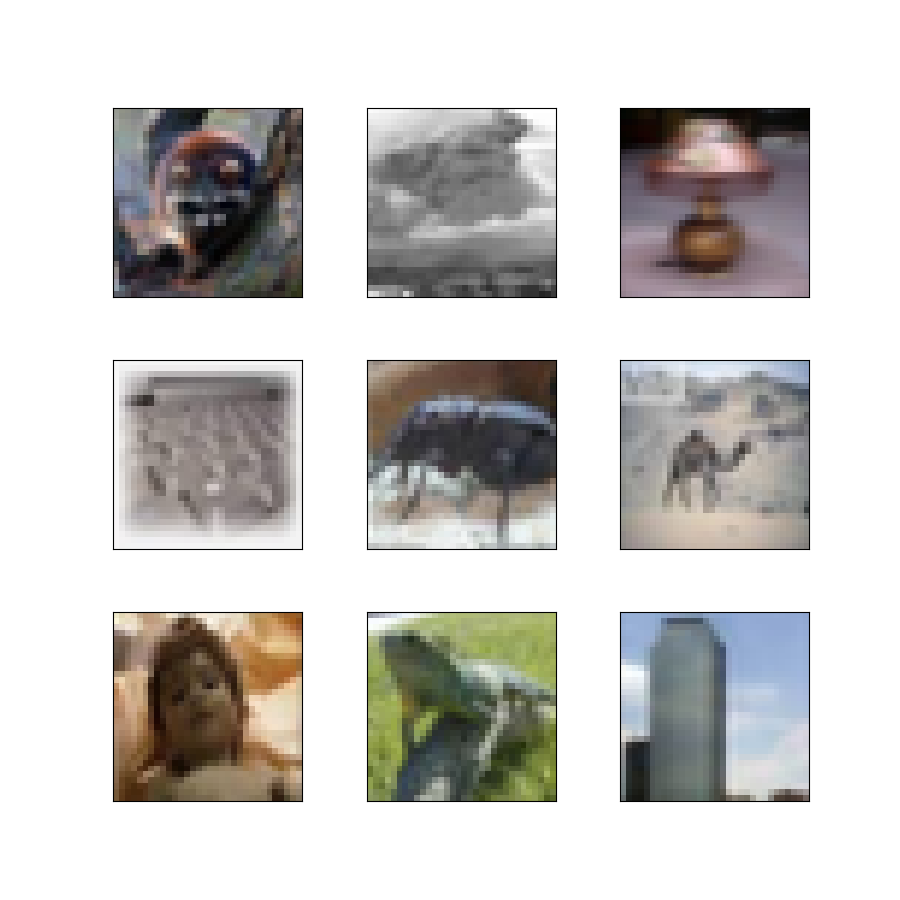- Descripción :
Una versión reetiquetada de CIFAR-100 con errores de anotación humanos reales. Para cada par (imagen, etiqueta) en el conjunto de trenes CIFAR-100 original, proporciona una etiqueta adicional proporcionada por un anotador humano real.
Página de inicio: https://www.cs.toronto.edu/~kriz/cifar.html
Código fuente :
tfds.image_classification.cifar100_n.Cifar100NVersiones :
-
1.0.0: Versión inicial. -
1.0.1(predeterminado): correspondencia fija entre anotaciones e imágenes.
-
Tamaño de la descarga :
160.71 MiBTamaño del conjunto de datos :
136.07 MiBInstrucciones de descarga manual : este conjunto de datos requiere que descargue los datos de origen manualmente en
download_config.manual_dir(el valor predeterminado es~/tensorflow_datasets/downloads/manual/):
Descargue 'side_info_cifar100N.csv', 'CIFAR-100_human_ordered.npy' y 'image_order_c100.npy' desde https://github.com/UCSC-REAL/cifar-10-100n
Luego convierta 'CIFAR-100_human_ordered.npy' en un archivo CSV 'CIFAR-100_human_annotations.csv'. Esto se puede hacer con el siguiente código:
import numpy as np
from tensorflow_datasets.core.utils.lazy_imports_utils import pandas as pd
from tensorflow_datasets.core.utils.lazy_imports_utils import tensorflow as tf
human_labels_np_path = '<local_path>/CIFAR-100_human_ordered.npy'
human_labels_csv_path = '<local_path>/CIFAR-100_human_annotations.csv'
with tf.io.gfile.GFile(human_labels_np_path, "rb") as f:
human_annotations = np.load(f, allow_pickle=True)
df = pd.DataFrame(human_annotations[()])
with tf.io.gfile.GFile(human_labels_csv_path, "w") as f:
df.to_csv(f, index=False)
Almacenamiento automático en caché ( documentación ): Sí
Divisiones :
| Separar | Ejemplos |
|---|---|
'test' | 10,000 |
'train' | 50,000 |
- Estructura de características :
FeaturesDict({
'coarse_label': ClassLabel(shape=(), dtype=int64, num_classes=20),
'id': Text(shape=(), dtype=string),
'image': Image(shape=(32, 32, 3), dtype=uint8),
'label': ClassLabel(shape=(), dtype=int64, num_classes=100),
'noise_label': ClassLabel(shape=(), dtype=int64, num_classes=100),
'worker_id': int64,
'worker_time': float32,
})
- Documentación de características :
| Rasgo | Clase | Forma | Tipo D | Descripción |
|---|---|---|---|---|
| CaracterísticasDict | ||||
| etiqueta_gruesa | Etiqueta de clase | int64 | ||
| identificación | Texto | cuerda | ||
| imagen | Imagen | (32, 32, 3) | uint8 | |
| etiqueta | Etiqueta de clase | int64 | ||
| etiqueta_ruido | Etiqueta de clase | int64 | ||
| trabajador_id | Tensor | int64 | ||
| trabajador_tiempo | Tensor | flotar32 |
Claves supervisadas (Ver
as_superviseddoc ):NoneFigura ( tfds.show_examples ):

- Ejemplos ( tfds.as_dataframe ):
- Cita :
@inproceedings{wei2022learning,
title={Learning with Noisy Labels Revisited: A Study Using Real-World Human
Annotations},
author={Jiaheng Wei and Zhaowei Zhu and Hao Cheng and Tongliang Liu and Gang
Niu and Yang Liu},
booktitle={International Conference on Learning Representations},
year={2022},
url={https://openreview.net/forum?id=TBWA6PLJZQm}
}

